Great Spotted Woodpecker
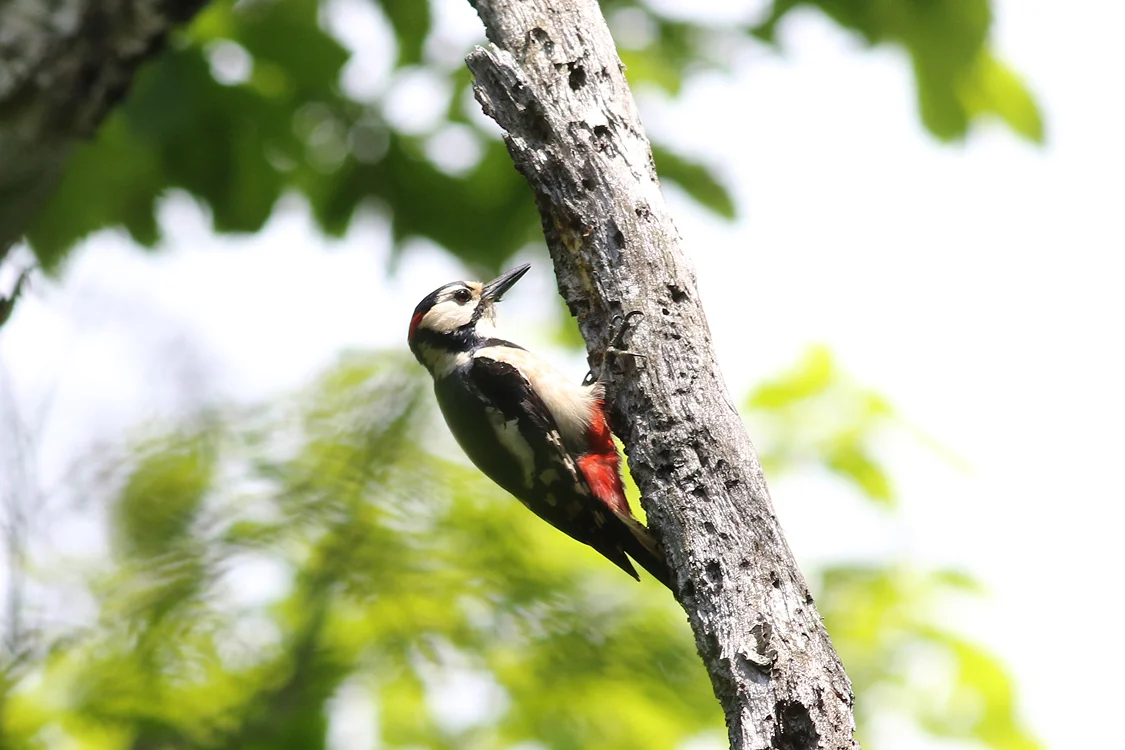
This page contains photos of animals.
Bird names are listed in accordance with the Check-list of Japanese Birds, 8th Revised Edition.Forest Drummer
This medium-sized woodpecker has a striking red, white, and black coloring. Its name in Japanese comes from the beautiful red plumage on its belly. Males also have red on the back of their heads, while females have black heads. Juveniles have a red crown. (Incidentally, this woodpecker is called “akagera” in Japanese, meaning “red woodpecker.” There are others like the Japanese Green Woodpecker, and the small black-and-white Japanese Pygmy Woodpecker.)
Using its strong, elongated toes and stiff tail feathers, it clings to vertical tree trunks and drums on them with its beak like a pile driver, asserting its territory or attracting a mate.
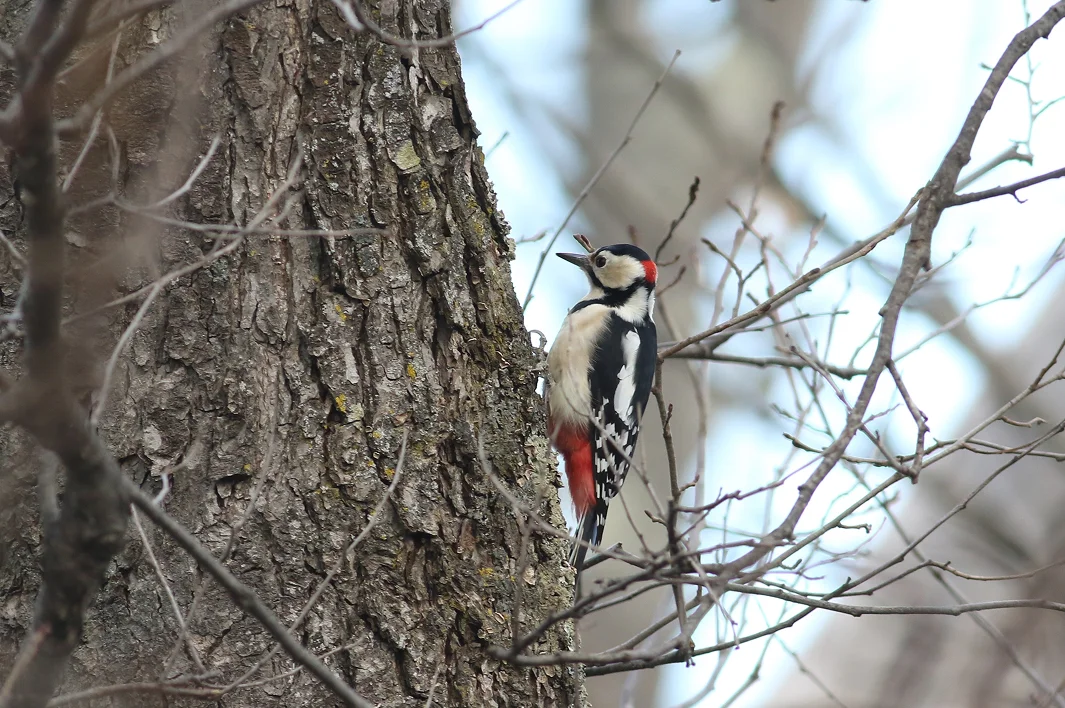
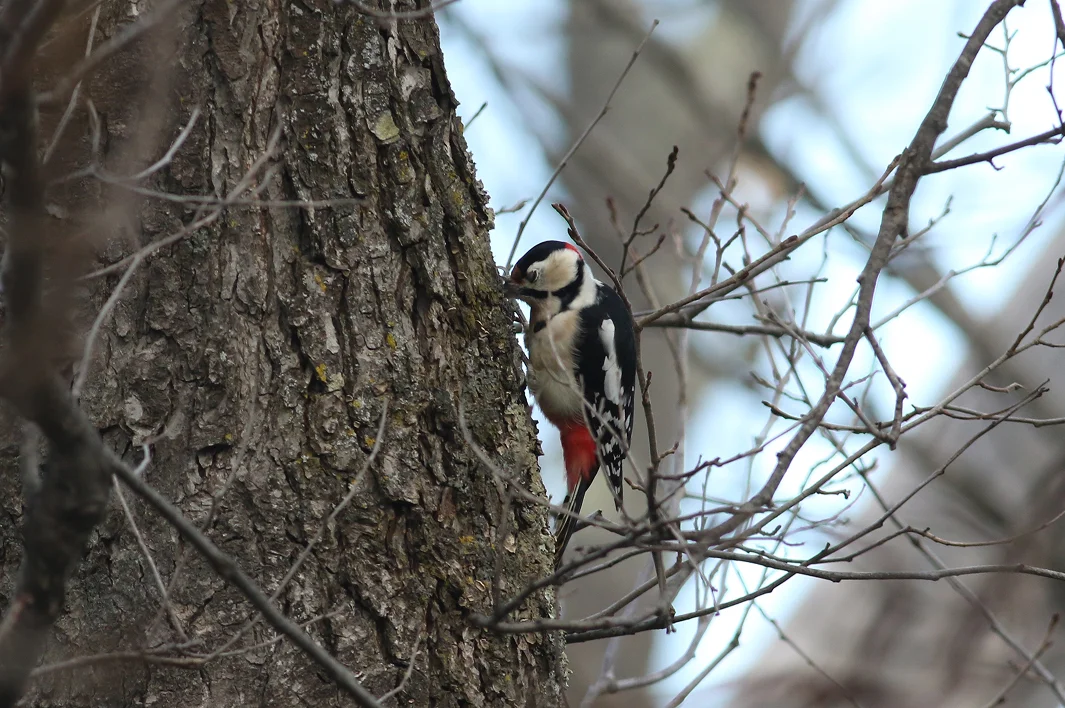
A Great Spotted Woodpecker drumming on a tree trunk
When drumming on a tree, the rapid “rat-a-tat-tat” sound echoes through the forest. However, thanks to a highly specialized skull structure, it doesn’t suffer concussions.
Apart from drumming, you might hear a slower “tok, tok, tok” sound. That’s the bird searching for insects inside the trunk or excavating a nest hole in dead or weakened trees.
Once a Great Spotted Woodpecker has finished with a nesting hole, other birds like Cinereous Tits will often make use of it. In Suntory’s Natural Water Sanctuaries, unless a tree poses a safety hazard or shows signs of disease like oak trees withering, even dead trees are left standing to provide nesting sites for birds such as the Great Spotted Woodpecker. Even dead trees adds character to the forest.
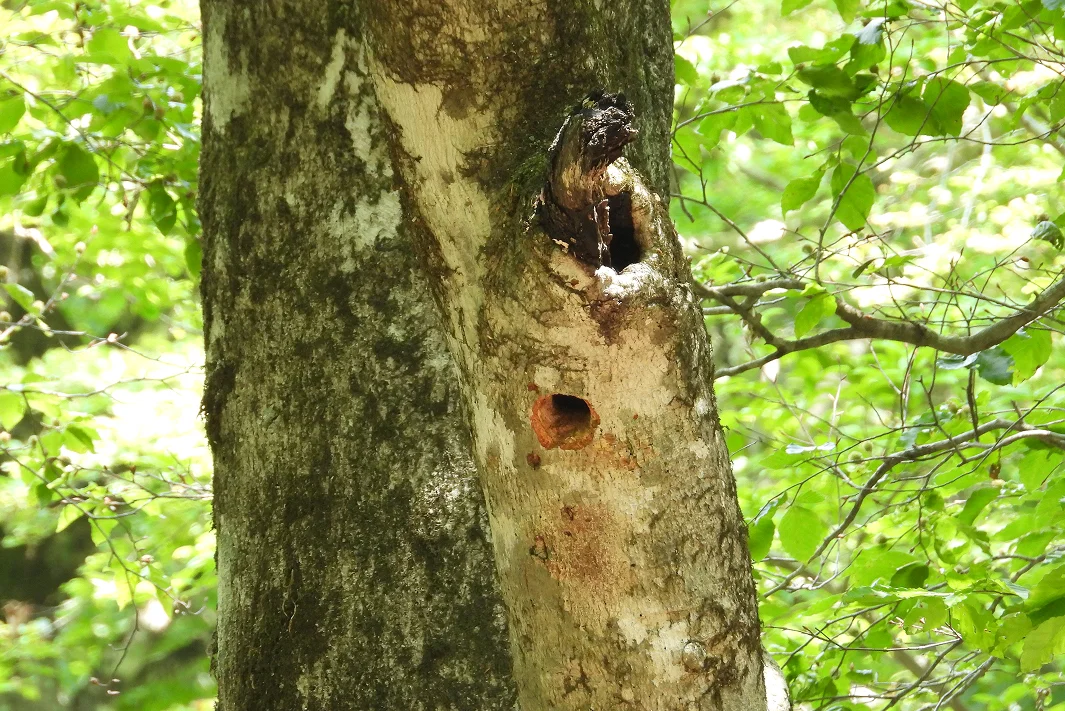
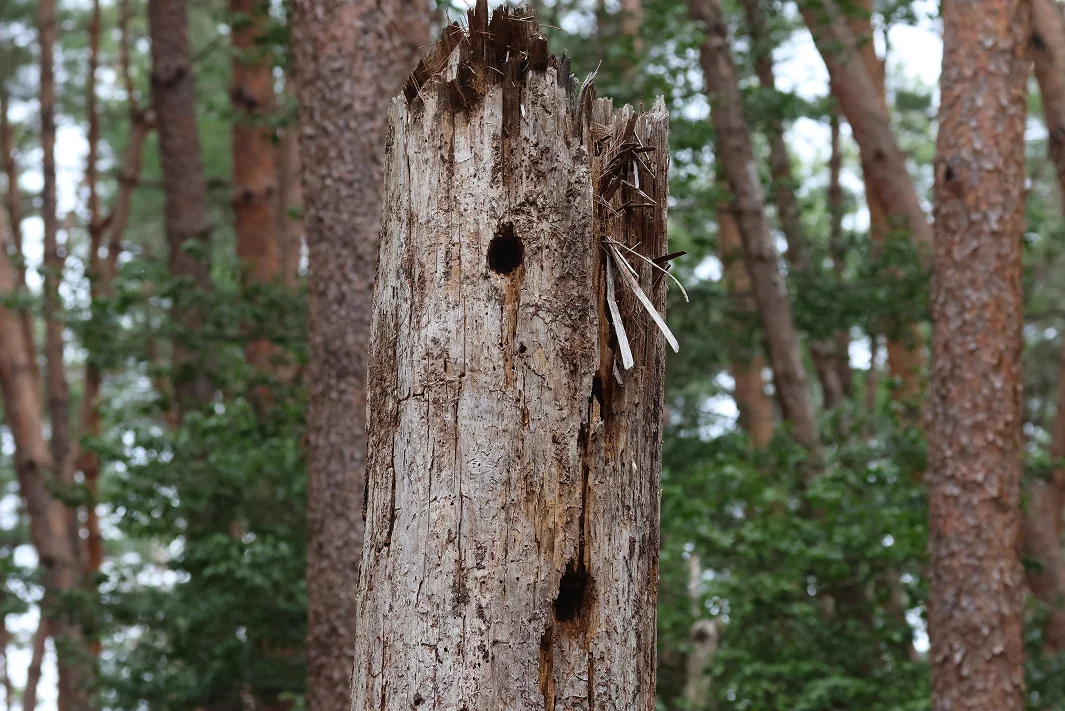
Pine Forest Guardians at the Suntory Hakushu Distillery
Located in a forested area of Hokuto City, Yamanashi Prefecture, the Suntory Hakushu Distillery features a bird sanctuary—a designated area for the protection of wild birds. This forest is a mixed woodland of tall pine trees with broadleaf trees growing beneath them, providing habitat for many small birds.
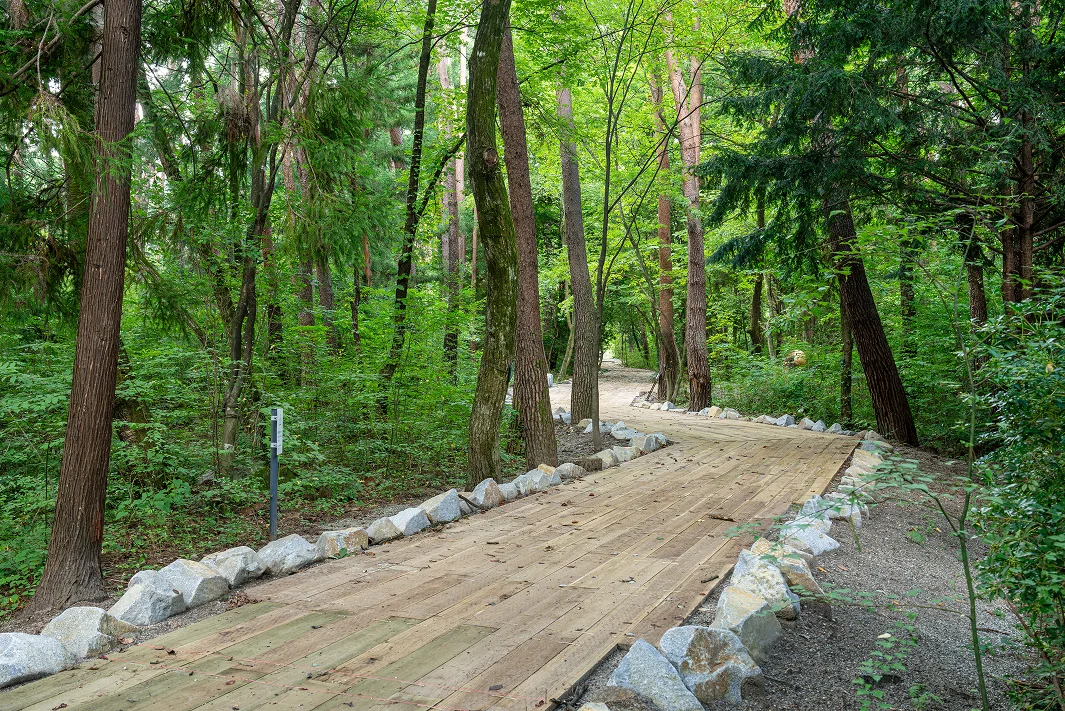
Across Japan, pine wilt disease is spreading. It occurs when the Japanese pine sawyer, a native longhorn beetle, carries and spreads the invasive pine wood nematode, Bursaphelenchus xylophilus. The Japanese pine sawyer chews on pine branches and introduces the pine wood nematode, which weakens the tree. The Japanese pine sawyer then lays eggs in the weakened pine, and the larvae feed on the trunk—creating a vicious cycle.
The Japanese pine sawyer has also reached the area around the Hakushu Distillery, bringing pine wilt with it. However, the pine forest within the whisky distillery grounds, the damage is minimal. That’s because Great Spotted Woodpeckers and other birds living in the bird sanctuary quickly prey on Japanese pine sawyers that make their way in from nearby infested areas.
When this sanctuary was created, we thought we were protecting the birds. In reality, however, the birds were protecting the forest.
Experts involved in this Initiative
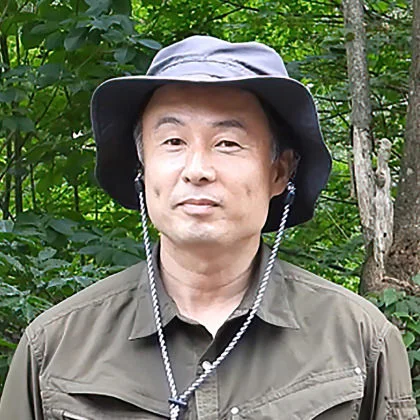
Takashi Fujii
Research Manager, Japanese Society for Preservation of Birds Research Department

MORISHO LLC
Natural Water Sanctuaries are Home to Many Other Living Things
Learn about some of the birds, mammals, insects, and living things that enrich the soil thriving in our Sanctuaries
Learn about the living things in the Natural Water Sanctuaries
 Home
Home Initiative Policy and Structure
Initiative Policy and Structure Living Things in the Natural Water Sanctuaries
Living Things in the Natural Water Sanctuaries Dedication to Water
Dedication to Water Natural Water Sanctuaries
Natural Water Sanctuaries  Natural Water
Natural Water  Initiative History
Initiative History